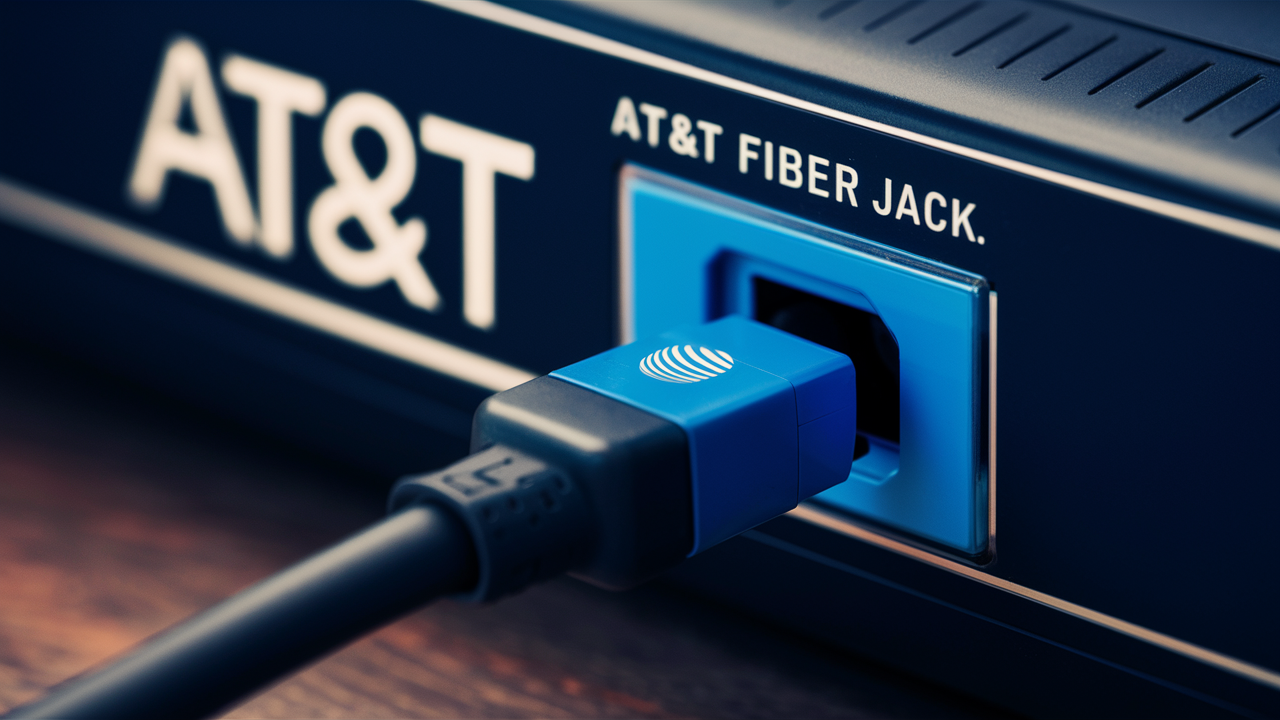What is the blue port on AT&T fiber?

The blue port shown in the AT&T fiber optic internet service connection is the network interface device (NID) or optical network terminal (ONT). This piece of equipment serves as a connection point between the fiber optic cable that directly connects to your house or office and your LAN.
The general role of a blue port is as follows:
The main functions of the blue ONT port on AT&T fiber are
1. To interpret and process the optical signals in the fiber line, you have to convert them into electrical signals that can be processed by your devices. Fiber optic internet uses fiber lines to conduct data signals in the form of pulses of light. These light pulses are then translated by the ONT back to the conventional electrical signals that can be transmitted through ethernet cables or wirelessly through WiFi connections.
2. Ensure that there are ethernet jacks available for wired connections. The ONT will feature one or more RJ45 ethernet ports, though which enable you to directly connect your devices to the ONT by using ethernet cables as opposed to WiFi. Most of the ONT models nowadays come with 4 ethernet ports.
3. It operates the internet connection as well as the internal network of the organization. The ONT provides your public WAN IP address required to connect to the internet. It also acts as a minor network switch to allow separate connected devices to communicate with each other. Some of the ONTs come to the market with in-built WiFi capability.
4. Validate service and connectivity. The ONT has a built-in diagnostic light that lights up to an orange color. These lights will provide information if you experience problems such as having no Internet connection and the lights act as indicators. Indicator lights are basic light signals that show various aspects including power, Ethernet connection, internet connection status, WiFi status, battery backup, etc.
5. Provide battery backup. As earlier stated, many fiber ONT models made by AT&T come with an inbuilt battery backup system that provides power and therefore temporary internet connection from the backup battery in the event of a power blackout. This can enable you to have a connection for some time in case a power outage occurs while you are in the middle of your work.
In other words, the blue ONT port controls and maintains your fiber optic internet connection and these signals then translate and offer ports to extend that particular connection all over your house or office.
ONT Models Utilized by AT&T Fiber
ONT is used in fiber internet installations by manufacturers such as Nokia, Calix, and Askey, among others, in its fiber internet installations. Some common AT&T ONT models you may have installed include
- Nokia 7368 Integrated Systems for Advanced Multimedia Optical Network Terminal
- Calix 844G GigaFamily Optical Network Terminal:
- RFT-31XX Series Optical Network Terminal is a family of Optical Network Terminals developed by Askey for supporting the fiber-to-the-home solution.
The specific ONT hardware that can be implemented is not confined but typically features a blue-colored housing and supports the functions described above. The model that you will be given for your AT&T Fiber Internet depends on the location of your dwelling and whether installation took place earlier or now.
Place your cursor on the Blue ONT Port.
In the case of AT&T fiber internet, there is no direct wired connectivity since all ports are found in the ONT. This includes:
- Plugging into any one of the ONT’s Ethernet outlets for the fastest and most reliable link.
- WiFi is the provision of an ONT wireless router or mesh system that connects to the ONT ethernet ports to supply WiFi service in your home.
- Connecting additional devices such as PCs, streaming television devices, or video game devices to the additional ethernet ports in the ONT.
Therefore, when connecting wired devices to the service provider’s Internet connection, you directly connect them to the blue ONT instead of using a wall ethernet port that you do with cable Internet.
How to maximize ONT’s benefits
To get the fastest speeds and best connectivity from your AT&T Internet fiber connection, be sure to
- Plug one end of a Cat5e or Cat6 ethernet cable into one of the Gigabit ethernet ports in your main router or if you have a mesh router system into the ONT. This ensures your WiFi network utilizes all the speeds of the fiber connection provided by your internet service provider.
- Since you will be having additional ports on the ONT, try to connect devices directly via ethernet cables whenever possible. This minimizes traffic on WiFi and is faster than using WiFi provided that the speed of the internet connection is good. Prioritize devices that need a high bandwidth such as gaming PCs and streaming TVs to be connected using wired ONT.
- Ensure that the ONT is in a power-on state at all times. Do not plug the ONT power into a switch where it can be easily turned off by accident which will also for your Internet connection.
- If the ONT has the option for registering the ONT battery backup system, then sign up for the ONT with the AT&T account. This enables AT&T to monitor the backup system and make tests on it to identify its functionality from a remote location.
Adherence to these best practices guarantees that you tap into the full benefits of high-speed connectivity indicated by fiber internet provided by AT&T through the blue optical network terminal port in your home.
Upgrade to faster, more reliable AT&T Fiber Internet today! Call us at +1 844-905-5002 and get connected with speeds that keep you ahead.





